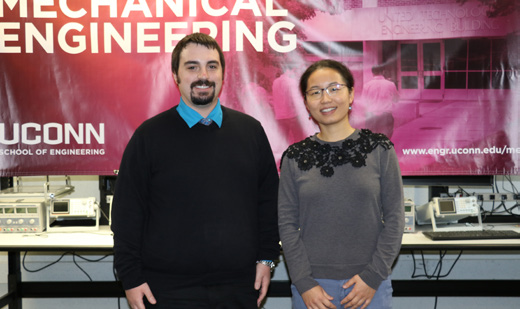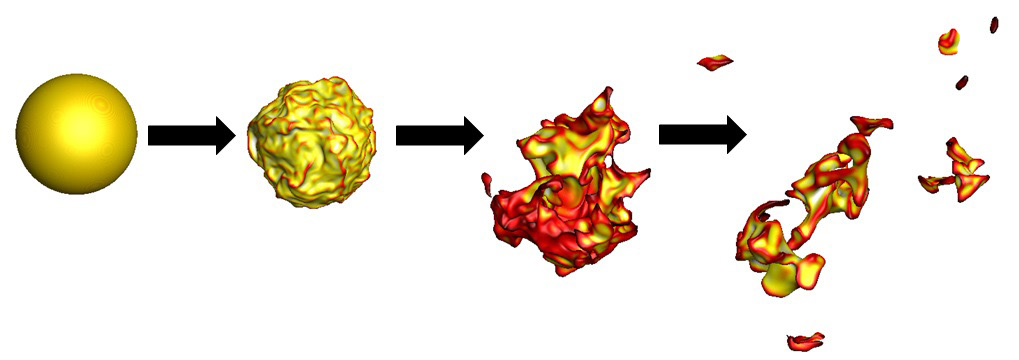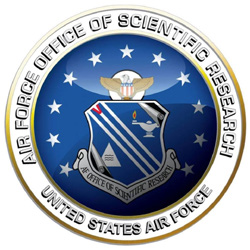
Figure 1

Mechanical Engineering
Team 66
Team Members |
Faculty Advisor |
Patrick Meagher |
Xinyu Zhao Sponsor Air Force Office of Scientific Research |
sponsored by

Ignition and extinction of turbulent flame kernels are of practical importance to the safe and reliable operation of combustion devices. A flame kernel is a small spherical flame surrounded by fresh fuel/air mixtures. For a flame kernel developing in turbulent fields, flame propagation and local extinction are competing with one another at any instant, contorting, stretching and shredding the flame surface. The local extinction events are of particular interest here to reveal the interactions between turbulence and chemistry. Three dimensional (3D) direct numerical simulations (DNS) coupled with detailed chemical kinetic models can provide details of the full thermochemical states and flow fields with sufficient temporal and spatial resolutions, and are adopted in this study to provide unique insights into the turbulence-chemistry interactions in increasingly turbulent regimes. First, fully-resolved 3D DNS of non-reacting turbulence was conducted to create the initial conditions for the flame kernels. Then, laminar and turbulent kernels were simulated, with full thermochemical and flow field data saved 20 times per eddy turnover. Finally, the flame surfaces were extracted from the terabytes of data collected. Animations and surface statistics were used to evaluate the evolution through time of the flame surface subject to intense turbulence.
